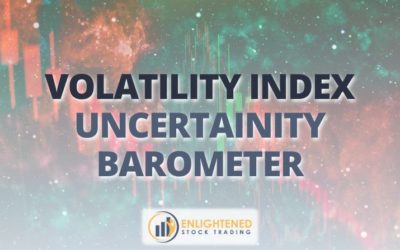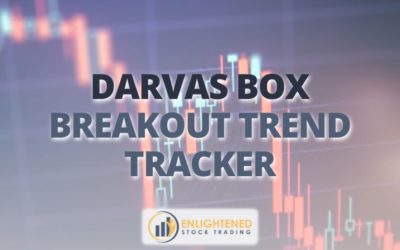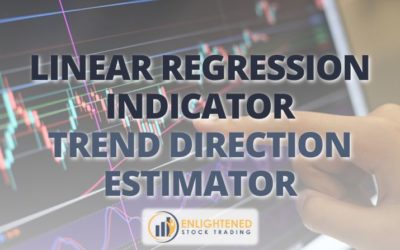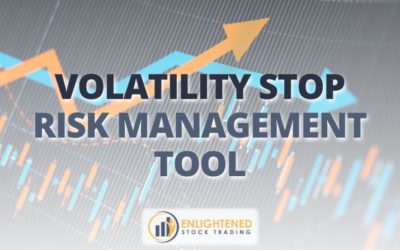The VIX (Volatility Index), often referred to as the fear index, measures the market’s expectations for volatility over the next 30 days and may be used as a powerful trading indicator. Launched by the Chicago Board Options Exchange (Cboe) in 1993, it reflects market expectations by capturing the price movement of index options on the S&P 500. To make it relatable, think of the VIX...
Adrian Reid

Master the Schaff Trend Cycle: A Powerful Indicator for Stock Traders
The Schaff Trend Cycle trading indicator (STC) is a technical analysis tool that can help stock traders identify trend changes and potential reversals. In simple terms, it’s a momentum indicator that combines moving average convergence divergence (MACD) with a cycle component to forecast when trends are likely to exhaust themselves or reverse. Imagine you're driving on a road trip, and you have...
How to Trade with the Darvas Box Strategy Like a Pro
The Darvas Box is a technical analysis trading indicator designed to help traders identify stocks that are breaking out of established price ranges. In simple terms, it’s like a "box" that forms when a stock price moves between a new high and a low price. Once it breaks above this new box, it’s time to take action. Imagine a stock trading within a trading range, bouncing between the top of the...
Williams -R: A Powerful Indicator for Spotting Overbought & Oversold Markets
Williams %R, or the Williams Percent Range, is a momentum oscillator trading indicator that helps traders identify overbought and oversold conditions. It moves between 0 and -100, showing where the current price sits relative to its recent high-low range. Think of the Williams %R indicator as a fuel gauge in a car, when the indicator is near -20, the market is "full" and potentially overbought....
Linear Regression Indicator: A Powerful Tool for Predicting Trends
The Linear Regression indicator is a trading indicator that applies statistical regression analysis to price data to identify the market’s prevailing trend. It plots a straight line that best fits recent price action over a specified period, minimizing the distance between prices and the line. This provides a “fair value” or equilibrium level for the asset. Traders often use it to spot trend...
Stock Market Update: Should you allocate more capital to the Nasdaq?
Here is what we cover in this week's stock market update: 7 Steps to Allocating Capital in a Hot Market Like Nasdaq Stock Market Update - Global Performance Roundup Wisdom from Jesse Livermore Special announcement from Enlightened Stock trading How do you allocate capital between markets / sectors / strategies when one part of the market is so strong (i.e. Tech stocks)? Should you move more...
Percentage Price Oscillator: A Powerful Tool for Trend Confirmation
The Percentage Price Oscillator (PPO) is a momentum trading indicator that measures the relative difference between two exponential moving averages (EMAs). Unlike traditional moving averages, which provide absolute price data, PPO expresses this difference as a percentage of the longer moving average. This makes it an effective tool for comparing momentum across different stocks, regardless of...
How to Use the Fisher Transform Indicator for Smarter Trades
The Fisher Transform is a technical analysis trading indicator developed by John F. Ehlers, a renowned figure in technical analysis, designed to convert price data into a Gaussian normal distribution. In simple terms, this transformation makes it easier for traders to identify potential market reversals by transforming price movements into a more statistically meaningful distribution. By...
How to Use Volatility Stops for Better Trade Exits
A volatility stop, while not a trading indicator, is an essential stop-loss strategy that helps traders manage risk by dynamically adjusting stop levels based on market conditions. Unlike a fixed stop order, a volatility stop adapts to market volatility, ensuring that trades have enough room to develop while still protecting profits. Think of a volatility stop like using windshield wipers in a...
Stock Market Update | What I’m Sharing Live in Singapore Today (You’ll Want to See This)
I’m in Singapore today, delivering a live talk on one of the biggest struggles traders face… and more importantly, how to end that struggle for good. Since I know most of you aren’t here in the room with me, I didn’t want you to miss the key lessons - because what I’m sharing today could save you years of frustration, losses, and second-guessing.The Hard Truth Most Traders Eventually DiscoverAt...
How to Use Stocks Above the 50-Day Moving Average for Entries
The 50-day moving average is one of the most closely watched trading indicators among market analysts, traders, and investors. It helps identify price trends by analyzing the average price level over a set time period, offering insights into whether a stock is experiencing an uptrend in progress or showing signs of strength or weakness. Many market benchmarks, such as the NASDAQ 100, use moving...
Sinewave Indicator Explained: A Powerful Tool for Trend Timing
The Sinewave trading indicator is a technical analysis tool designed to identify cyclical patterns in financial markets. Unlike lagging indicators such as moving averages, which react to price action after trends have already formed, the Sinewave Indicator seeks to detect dominant market cycles before they occur. It does this by analyzing the natural rhythm of price fluctuations, much like how...












